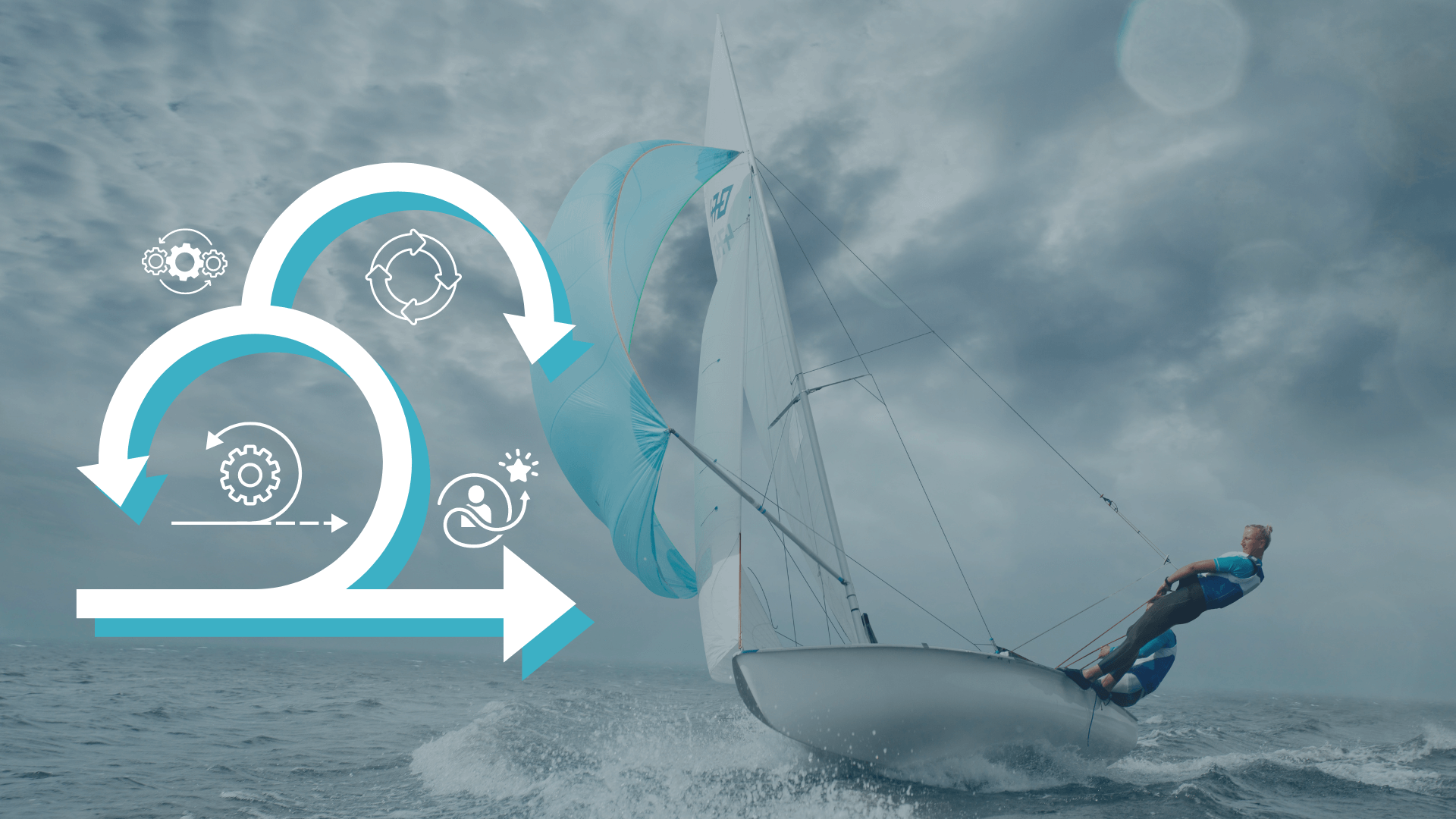In the ever-changing world of project management and competitive sailing. The ability to learn and adapt is the wind that propels both endeavours forward. Agile teams, tackling complex projects and racing crews striving for victory on the open water, share a deep commitment to continuous improvement. Discover how Agile teams and racing crews learn from every sprint/race by continuously adapting their approach for project success.
The Sprint as a Mini-Voyage
Agile methodologies, like Scrum, break down projects into manageable sprints. Each sprint is a microcosm of the entire project. This is similar to how a single leg of a sailboat race represents a smaller but crucial portion of the entire voyage. During a sprint, the team focuses on a defined set of user stories, analogous to the navigation charts guiding the crew through specific sections of the racecourse, this is only one example of how agile teams and racing crews learn from every sprint/race. These user stories outline specific functionalities or features, much like the charts that detail potential hazards, currents, and ideal routes.

Daily Stand-Ups: Checking the Rigging
Daily stand-up meetings are essential for agile teams, just as checking the rigging is crucial for sailors. These brief huddles, like a quick deck check, allow team members to communicate progress and identify roadblocks (impediments). Imagine a tangled rope hindering the crew’s ability to adjust the sails – that’s equivalent to an impediment in an agile setting. Both require immediate attention to ensure smooth progress.
- Focus on Functionality: Both activities ensure crucial components are functioning properly. Rigging checks confirm ropes, sails, and winches are operational for smooth sailing. Daily stand-ups verify team members have the tools and resources they need to complete their tasks.
- Identifying Issues Early: During a rigging check, sailors identify worn ropes, loose knots, or damaged sails that could hinder their progress at sea. Similarly, daily stand-ups allow team members to identify potential roadblocks (impediments) early on, allowing for timely solutions and preventing delays.
- Quick and Collaborative: Both activities are quick and collaborative efforts. Rigging checks involve a quick inspection by the crew, often with multiple sailors working together. Daily stand-ups are short, focused meetings where team members share updates and collaborate on solutions for any roadblocks identified.
Retrospectives: Debriefing After the Storm
The heart of continuous improvement lies in the retrospective. At the end of a sprint, the team gathers to reflect on their performance. Just like a racing crew conducting a post-race debriefing after encountering a challenging storm. They discuss what went well, what didn’t (“What weighed down the anchor?”), and brainstorm ways to improve processes for the next sprint. This retrospective mirrors the sailors’ analysis of sail handling, boat strategy, and communication during the race, identifying areas for improvement.
Challenges Faced: Both situations involve dealing with a challenging experience. A storm at sea can test the crew’s skills, damage equipment, and force them to adapt their course. Similarly, an agile sprint might encounter unexpected roadblocks, communication issues, or missed deadlines.
Open and Honest Discussion: Both debriefings encourage open and honest discussions about what went well and what didn’t. Sailors might discuss their sail handling during the storm, communication breakdowns, or near misses. Agile teams discuss completed user stories, challenges faced, and areas where the process could be improved.
Identifying Areas for Improvement: The core objective of both sessions is to identify areas for improvement. Sailors might decide to reinforce the rigging, practice better communication in rough seas, or adjust their future weather forecasting strategies. Agile teams might identify the need for clearer requirements, improved communication tools, or adjustments to their sprint planning process.
Ultimately, both debriefings aim to build resilience for future endeavours. The sailors emerge better prepared for the next storm, having learned from their experience. Agile teams become more efficient and effective in their project delivery through continuous improvement based on sprint retrospectives.

Learning from Every Race:
Racing crews don’t just learn from their victories; they also glean valuable insights from observing their competitors. This translates directly to the agile world. Teams can learn from successful projects within their organization or industry, adapting best practices to enhance their own approach. Analyzing competitor tactics in a race is akin to studying how other agile teams have tackled similar challenges, ultimately leading to a more efficient and optimized process.
Building a Culture of Continuous Improvement:
Both agile teams and racing crews thrive on a culture that embraces learning and experimentation. Team members feel empowered to share ideas, experiment with new approaches (adjusting the sails!), and learn from both successes and failures. This fosters a dynamic environment where continuous improvement becomes ingrained in the team’s DNA, similar to how a well-oiled racing crew instinctively adjusts to changing weather conditions.
The Shared Journey:
While their goals may differ – agile teams delivering a product and racing crews crossing the finish line first – both share a commitment to continuous improvement. By consistently learning from each sprint or race, they refine their approach, adapt to changing conditions, and ultimately achieve their goals with greater efficiency and effectiveness. So, the next time you see a racing crew adjusting their sails or an agile team huddled in a retrospective meeting, remember – they’re not just focused on the immediate task at hand, they’re actively shaping their path to continuous improvement, ensuring a smooth and successful journey towards their respective destinations.

The Importance of the Journey:
- While the finish line is the ultimate goal, the journey itself holds immense significance in both scenarios. Both teams learn and adapt throughout the process. Agile teams refine their approach based on sprint retrospectives, while racing crews adjust their strategies based on weather changes and competitor movements.
- The journey fosters teamwork, resilience, and problem-solving skills. Just like sailors need to rely on each other to navigate challenging waters, agile teams collaborate to overcome roadblocks and achieve success.
In essence, the “Shared Journey” highlights the dedication and continuous learning that propel both agile teams and racing crews towards their respective finish lines. Their journeys, though in different fields, share a core set of values that drive them forward: collaboration, adaptation, and a relentless pursuit of improvement.
Visit our Article page to see other helpful articles and videos.
Follow us on social media to stay up to date.

